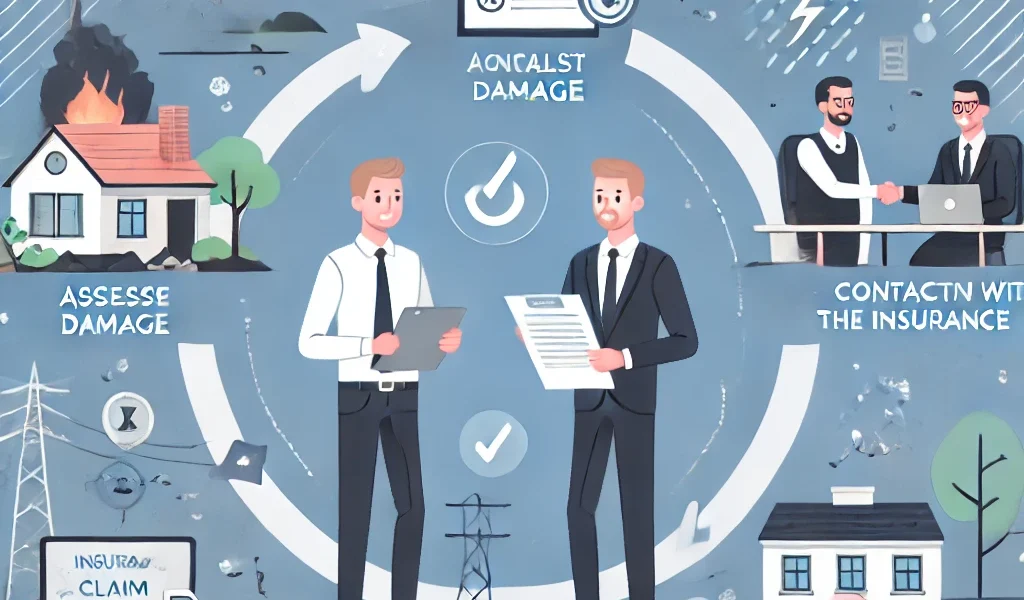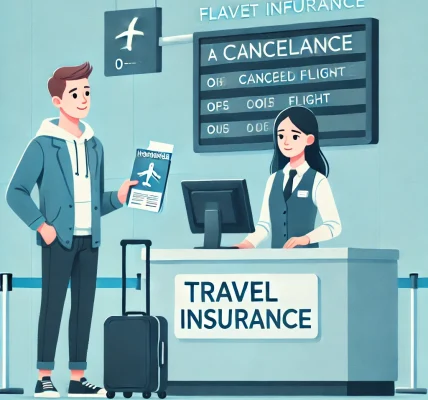Natural disasters, such as hurricanes, earthquakes, floods, and wildfires, can cause significant damage to homes, businesses, and vehicles. When such events occur, affected individuals and businesses rely on insurance to recover their losses. However, the process of filing and receiving insurance claims after a natural disaster can be complex and time-consuming. Understanding how natural disasters impact insurance claims and payouts can help policyholders navigate the claims process more efficiently and ensure they receive fair compensation for their losses.
1. How Natural Disasters Affect Insurance Claims
Natural disasters often lead to an overwhelming number of claims being filed simultaneously. This surge in claims can create challenges for both insurers and policyholders, including:
Increased Claim Volume
- Natural disasters can affect entire communities, leading to thousands of claims being filed at once.
- Insurance companies may experience delays in processing claims due to the high volume.
- Policyholders may face extended wait times before receiving payouts.
Damage Assessments and Adjuster Availability
- Insurance adjusters are responsible for assessing damages and determining claim payouts.
- After a disaster, adjusters may be in short supply, leading to delays in inspections and evaluations.
- Insurers may bring in third-party adjusters to help expedite the process, but inconsistencies in assessments can occur.
Disputed Claims
- Policyholders may find that their claims are denied or undervalued due to exclusions in their policies.
- Disagreements over the extent of damage or the cost of repairs can lead to disputes.
- Legal challenges may arise if insurers and policyholders cannot reach an agreement on claim settlements.
2. Common Types of Insurance Claims After Natural Disasters
Different types of insurance policies provide coverage for various aspects of natural disaster-related damages:
Homeowners Insurance Claims
- Covers damage to a home caused by windstorms, fire, and hail.
- May exclude coverage for floods and earthquakes, requiring additional policies.
- Additional Living Expenses (ALE) coverage may help with temporary housing costs.
Flood Insurance Claims
- Standard homeowners insurance policies do not cover flood damage.
- The National Flood Insurance Program (NFIP) or private flood insurance policies provide coverage.
- Claims can take longer to process due to the need for separate damage assessments.
Auto Insurance Claims
- Comprehensive auto insurance covers damage from floods, hurricanes, and wildfires.
- Policyholders with only liability coverage may not receive compensation for natural disaster-related damage.
Business Insurance Claims
- Business interruption insurance may cover lost income due to disaster-related closures.
- Commercial property insurance helps businesses recover from structural and inventory damage.
- Business owners must document losses thoroughly to support claims.
3. Factors That Influence Insurance Payouts
Several factors determine how much compensation a policyholder will receive after filing a claim for disaster-related damages:
Policy Limits and Deductibles
- Policy limits determine the maximum amount an insurer will pay for damages.
- Higher deductibles mean policyholders must pay more out-of-pocket before coverage kicks in.
Type of Coverage
- Comprehensive policies provide broader coverage than basic policies.
- Named-peril policies cover only specific types of disasters, while all-risk policies offer broader protection.
Extent of Damage and Repair Costs
- Insurers assess the severity of damage and the estimated cost of repairs.
- Underinsurance may result in policyholders receiving less than needed for full recovery.
State and Federal Assistance
- In major disasters, federal aid may supplement insurance payouts.
- Government disaster relief programs may provide temporary housing, low-interest loans, or grants.
4. Tips for Filing a Successful Insurance Claim After a Natural Disaster
Policyholders can take specific steps to improve the likelihood of a successful insurance claim:
Review and Understand Your Policy
- Check coverage limits, deductibles, and exclusions before a disaster occurs.
- Ensure you have the necessary policies, such as flood or earthquake insurance, if you live in a high-risk area.
Document Damage Thoroughly
- Take photos and videos of all damages before making repairs.
- Keep receipts for temporary repairs and expenses related to displacement.
Report Claims Promptly
- File a claim as soon as possible to avoid processing delays.
- Provide accurate information and supporting documentation when submitting a claim.
Work With an Adjuster
- Be present when an adjuster inspects the damage to ensure all losses are noted.
- Request a copy of the adjuster’s report to verify accuracy.
Negotiate if Necessary
- If the payout offer is insufficient, provide additional evidence to support a higher claim amount.
- Consider hiring a public adjuster or seeking legal advice if disputes arise.
5. Common Challenges in Disaster-Related Insurance Claims
Denial of Claims Due to Policy Exclusions
- Some policies exclude damages from specific disasters, such as earthquakes or hurricanes.
- Policyholders must purchase separate policies for uncovered risks.
Delays in Processing Claims
- High claim volume can lead to slow claim processing.
- Insurers may require additional documentation, extending the timeline.
Disputes Over Damage Valuation
- Insurance adjusters and policyholders may have differing assessments of repair costs.
- Independent appraisals can help resolve valuation disputes.
Fraud and Misrepresentation Risks
- Policyholders should avoid inflating claims or providing misleading information.
- Insurers may conduct investigations if fraud is suspected, delaying payouts.
Conclusion
Natural disasters can cause significant financial strain, making insurance coverage crucial for recovery. However, navigating the claims process can be challenging due to high claim volumes, damage assessments, and potential disputes. Policyholders can improve their chances of a successful claim by understanding their coverage, documenting damages thoroughly, and working proactively with insurers. Staying informed and prepared ensures that individuals and businesses receive the financial support they need to rebuild and recover after a natural disaster.
By following these best practices, policyholders can maximize their insurance payouts and minimize delays, ensuring they receive the compensation necessary to restore their homes, businesses, and lives.




